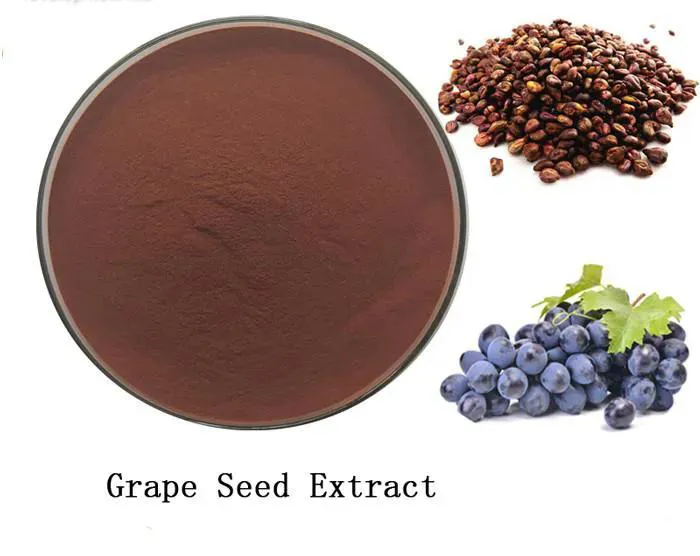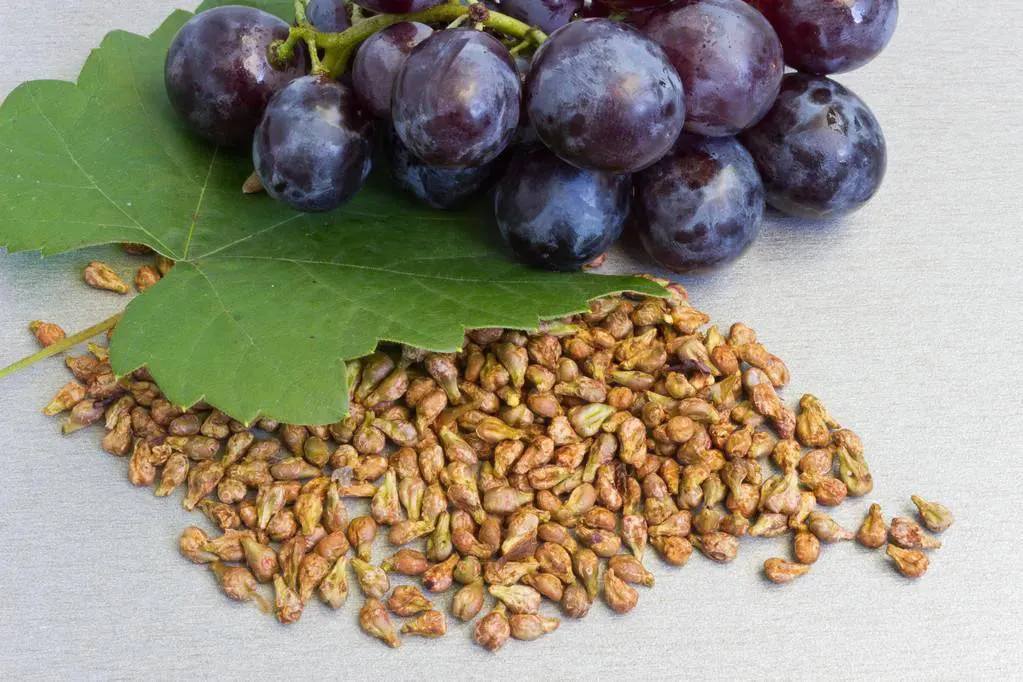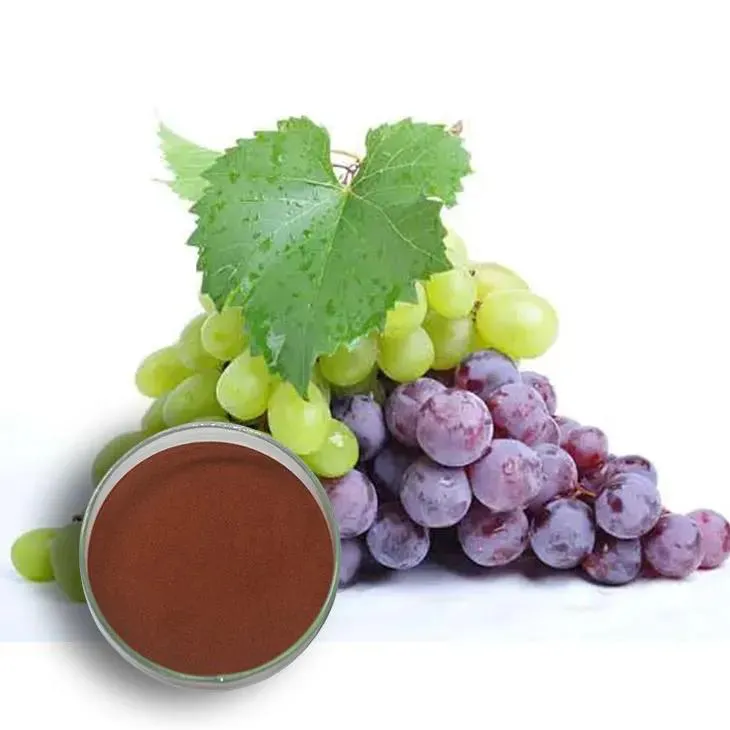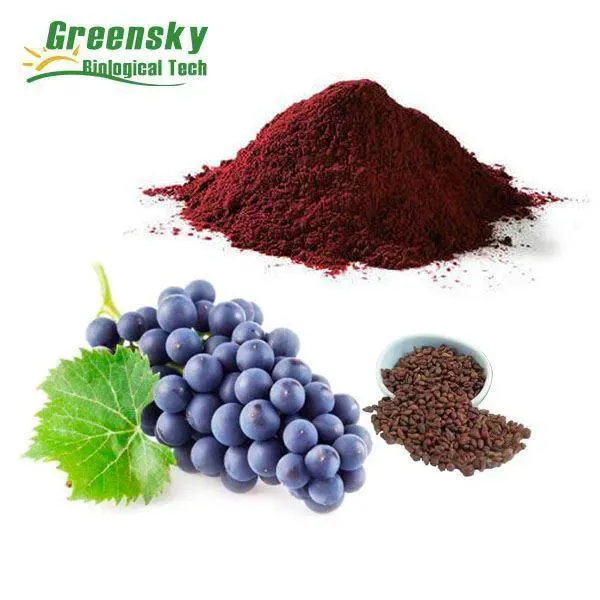- 0086-571-85302990
- sales@greenskybio.com
Embracing the Grape: How Grape Seed Extract Can Improve Capillary Integrity
2024-07-24

Introduction
Capillary integrity is an essential aspect of our overall health. These tiny blood vessels play a vital role in delivering oxygen and nutrients to cells throughout the body and removing waste products. Any disruption to capillary integrity can lead to a variety of health issues. Grape Seed Extract has emerged as a promising natural substance with the potential to enhance capillary integrity. This article delves into the mechanisms by which it works at the cellular level, its anti - inflammatory effects on capillaries, and how it can be integrated into a healthy lifestyle.

Capillary Structure and Function
Capillaries are the smallest blood vessels in the body, with a diameter of only about 5 - 10 micrometers. They form a vast network that connects arterioles (small arteries) to venules (small veins). Their thin walls, consisting of a single layer of endothelial cells, allow for the efficient exchange of substances between the blood and the surrounding tissues. Oxygen, carbon dioxide, nutrients such as glucose and amino acids, and waste products like urea are all transferred across the capillary walls through processes such as diffusion and active transport.
The integrity of the capillary walls is maintained by a complex interplay of structural proteins, adhesion molecules, and signaling pathways. Endothelial cells secrete a variety of factors that regulate vascular tone, platelet aggregation, and immune cell adhesion. Any damage to these cells or disruption of these regulatory mechanisms can lead to increased permeability of the capillary walls, allowing fluid and proteins to leak into the surrounding tissues, which can result in edema (swelling) and inflammation.

Grape Seed Extract: Composition and Properties
Grape Seed Extract is derived from the seeds of grapes (Vitis vinifera). It is rich in a class of polyphenolic compounds known as proanthocyanidins. These are large molecules composed of multiple flavonoid units. Proanthocyanidins are known for their antioxidant properties, which help to neutralize free radicals in the body. Free radicals are highly reactive molecules that can damage cells, including endothelial cells in capillaries.
In addition to proanthocyanidins, grape seed extract also contains other bioactive compounds such as flavonoids, phenolic acids, and oligomeric proanthocyanidin complexes (OPCs). These components work synergistically to confer various health benefits. For example, some of the flavonoids in grape seed extract have been shown to have anti - inflammatory and vasodilatory effects.

Mechanisms of Action at the Cellular Level
Antioxidant Activity
One of the primary ways in which grape seed extract improves capillary integrity is through its antioxidant activity. Free radicals can cause oxidative stress in endothelial cells, leading to lipid peroxidation, DNA damage, and protein modification. Proanthocyanidins in grape seed extract can scavenge free radicals, preventing them from causing damage to the cell membranes of endothelial cells. By reducing oxidative stress, the extract helps to maintain the normal structure and function of the endothelial cells, which is crucial for capillary integrity.
Regulation of Endothelial Cell Signaling
Grape seed extract also modulates various signaling pathways within endothelial cells. It can influence the production and activity of nitric oxide (NO), a key molecule involved in regulating vascular tone. NO causes relaxation of the smooth muscle cells in the walls of blood vessels, including capillaries, which helps to maintain normal blood flow. Additionally, the extract can affect the expression of adhesion molecules on the surface of endothelial cells. By reducing the expression of certain adhesion molecules, it can prevent the excessive adhesion of white blood cells to the capillary walls, which is an important step in reducing inflammation.
Stimulation of Collagen Synthesis
Collagen is an important structural protein in the capillary walls. Grape seed extract has been shown to stimulate the synthesis of collagen in endothelial cells. This helps to strengthen the capillary walls, making them more resistant to damage. By promoting collagen synthesis, the extract contributes to the maintenance of capillary integrity over time.

Anti - Inflammatory Effects on Capillaries
Inflammation in capillaries can be caused by a variety of factors, including oxidative stress, infection, and autoimmune reactions. Grape seed extract has several anti - inflammatory effects on capillaries.
Reduction of Cytokine Production
Cytokines are small proteins that play a key role in the inflammatory response. Grape seed extract can inhibit the production of certain cytokines, such as interleukin - 1β (IL - 1β) and tumor necrosis factor - α (TNF - α), in endothelial cells and immune cells. By reducing the levels of these pro - inflammatory cytokines, the extract helps to dampen the inflammatory response in and around the capillaries.
Inhibition of Inflammatory Enzyme Activity
Some enzymes, such as cyclooxygenase - 2 (COX - 2) and lipoxygenase (LOX), are involved in the production of inflammatory mediators. Grape seed extract can inhibit the activity of these enzymes, thereby reducing the synthesis of prostaglandins and leukotrienes, which are important mediators of inflammation. This inhibition helps to reduce inflammation in the capillary walls and the surrounding tissues.
Incorporating Grape Seed Extract into a Healthy Lifestyle
Dietary Sources
One way to obtain grape seed extract is through dietary sources. Grapes themselves are a rich source of the bioactive compounds found in grape seed extract. Eating a variety of grapes, such as red, green, and black grapes, can provide some of the benefits associated with grape seed extract. However, the concentration of the active compounds in whole grapes is relatively low compared to concentrated grape seed extract supplements.
Supplements
Grape seed extract supplements are widely available in the market. When choosing a supplement, it is important to look for a high - quality product that contains a standardized amount of proanthocyanidins. The recommended dosage of grape seed extract can vary depending on the individual's health status and the specific product. It is advisable to consult a healthcare professional before starting to take grape seed extract supplements.
Combination with a Balanced Diet and Exercise
To maximize the benefits of grape seed extract on capillary integrity, it should be combined with a balanced diet and regular exercise. A diet rich in fruits, vegetables, whole grains, and lean proteins provides the necessary nutrients for overall health, including the maintenance of healthy capillaries. Regular exercise helps to improve blood circulation, which is beneficial for capillary function. By incorporating grape seed extract into a healthy lifestyle that includes a good diet and exercise, individuals can enhance their capillary integrity and overall well - being.
Conclusion
Capillary integrity is of utmost importance for our health, and grape seed extract offers a natural and potentially effective way to improve it. Through its antioxidant activity, regulation of endothelial cell signaling, and anti - inflammatory effects, grape seed extract can help to maintain the normal structure and function of capillaries. Incorporating grape seed extract into a healthy lifestyle through dietary sources or supplements, along with a balanced diet and exercise, can provide additional benefits for capillary integrity and overall health. However, more research is still needed to fully understand the long - term effects and optimal usage of grape seed extract in relation to capillary health.
FAQ:
What is capillary integrity?
Capillary integrity refers to the normal structure and function of capillaries. Capillaries are the smallest blood vessels in the body. They play a vital role in the exchange of substances such as oxygen, nutrients, and waste products between the blood and the surrounding tissues. Maintaining capillary integrity ensures proper blood flow, nutrient delivery, and waste removal at the cellular level.
How does grape seed extract work at a cellular level to improve capillary integrity?
At a cellular level, grape seed extract contains powerful antioxidants like proanthocyanidins. These antioxidants can neutralize free radicals, which are unstable molecules that can damage cells, including those in the capillary walls. By reducing oxidative stress, grape seed extract helps protect the endothelial cells lining the capillaries. It also may enhance the production of collagen and elastin, which are important components of the capillary walls, thus strengthening the structure of capillaries and improving their integrity.
What are the anti - inflammatory effects of grape seed extract on capillaries?
Grape seed extract has anti - inflammatory effects on capillaries. Inflammation can damage the capillary walls. The antioxidants in grape seed extract can inhibit the production of inflammatory mediators such as cytokines and prostaglandins. This helps to reduce inflammation in the capillary area, preventing damage to the capillary walls and maintaining their normal function. Additionally, it may improve the endothelial function of capillaries, which is related to reducing inflammation and promoting healthy blood flow.
How can grape seed extract be incorporated into a healthy lifestyle?
There are several ways to incorporate grape seed extract into a healthy lifestyle. One option is to take it as a dietary supplement in the form of capsules or tablets, following the recommended dosage instructions. It can also be found in some fortified foods or beverages. However, it's important to consult a healthcare provider before starting any new supplement. In addition to taking grape seed extract, maintaining a balanced diet rich in fruits, vegetables, whole grains, and lean proteins, along with regular exercise, stress management, and avoiding smoking and excessive alcohol, all contribute to a healthy lifestyle that can enhance the potential benefits of grape seed extract on capillary integrity.
Are there any side effects of using grape seed extract?
For most people, grape seed extract is generally safe when taken in appropriate doses. However, some individuals may experience mild side effects such as headache, dizziness, or an upset stomach. In rare cases, it may cause allergic reactions, especially in those who are allergic to grapes or related products. It's crucial to stop using it and seek medical attention if any unusual or severe symptoms occur. Also, since it can interact with certain medications, it's advisable to inform your doctor if you are taking grape seed extract while on other medications.
Related literature
- The Effects of Grape Seed Extract on Vascular Health"
- "Grape Seed Extract: A Review of its Role in Maintaining Capillary Integrity"
- "Antioxidant Properties of Grape Seed Extract and Their Impact on Capillary Function"
- ▶ Hesperidin
- ▶ Citrus Bioflavonoids
- ▶ Plant Extract
- ▶ lycopene
- ▶ Diosmin
- ▶ Grape seed extract
- ▶ Sea buckthorn Juice Powder
- ▶ Fruit Juice Powder
- ▶ Hops Extract
- ▶ Artichoke Extract
- ▶ Mushroom extract
- ▶ Astaxanthin
- ▶ Green Tea Extract
- ▶ Curcumin
- ▶ Horse Chestnut Extract
- ▶ Other Product
- ▶ Boswellia Serrata Extract
- ▶ Resveratrol
- ▶ Marigold Extract
- ▶ Grape Leaf Extract
- ▶ New Product
- ▶ Aminolevulinic acid
- ▶ Cranberry Extract
- ▶ Red Yeast Rice
- ▶ Red Wine Extract
-
Maca Extract
2024-07-24
-
Tamarind extract powder
2024-07-24
-
Epimedium extract powder
2024-07-24
-
Curcumin
2024-07-24
-
Phellodendron Extract
2024-07-24
-
Almond Extract Powder
2024-07-24
-
Purple Sweet Potato Extract
2024-07-24
-
Troxerutin
2024-07-24
-
Carrageenan Extract Powder
2024-07-24
-
Acerola Juice Powder
2024-07-24





















